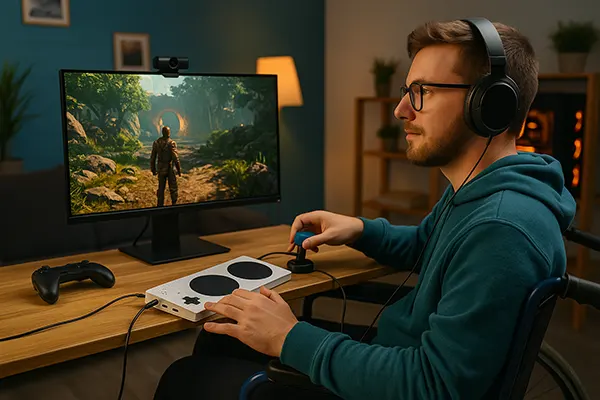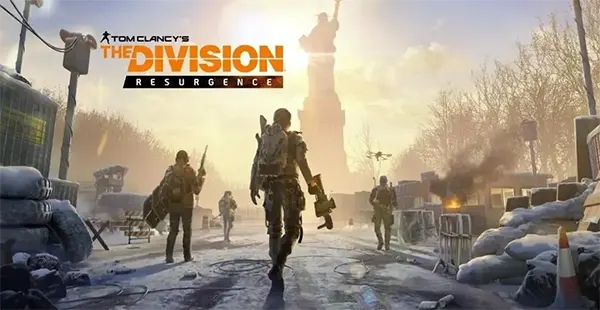
In recent years, the gaming industry has made significant progress in terms of accessibility, and by June 2025, this progress has become more systemic, inclusive, and innovative. Developers now actively integrate accessibility into core game design, rather than treating it as an afterthought or optional add-on. This approach ensures that more people with visual, auditory, or motor disabilities can fully engage with modern gaming experiences on equal terms.
One of the most impactful breakthroughs remains the continued evolution of adaptive controllers. Microsoft’s Xbox Adaptive Controller has undergone further refinement, now offering better compatibility with third-party peripherals and custom setups for individuals with a wider range of motor impairments. This device now supports full plug-and-play integration with Xbox Series X/S, PC, and selected mobile devices.
On the software front, Naughty Dog has set a new industry benchmark. Their recent AAA titles feature layered UI customisation, text-to-speech options, high-contrast modes, and intelligent subtitle systems with speaker labels, emotional cues, and adjustable sizes. These features are not only for players with permanent impairments but also cater to situational and temporary disabilities.
Beyond hardware and settings, we also see deeper AI integration. Ubisoft and EA have invested in accessibility-focused AI agents that help players navigate environments through audio beacons, haptic feedback, or even gesture-based interfaces, tailored in real-time to the user’s needs.
Games in 2025 offer extensive options for visually impaired players. Screen readers are now more responsive and can describe not just text, but also in-game objects, NPC gestures, and combat indicators. This is particularly visible in strategy and RPG genres, where complex UIs previously excluded many users.
For deaf and hard-of-hearing gamers, closed captions are more immersive. Real-time sound source tagging and context-sensitive captions describe not just what is heard, but also how close, urgent, or emotional a sound is. This significantly improves immersion and gameplay clarity.
Some titles even incorporate sign language avatars in tutorials and cutscenes. Games like “The Last of Us Part III” and indie projects on Steam are pioneering this form of communication integration, offering more than just compliance — they offer emotional representation.
Motor accessibility has become a design priority in most modern games. Studios now offer full remapping of controls, support for one-handed mode, and time dilation mechanics that allow for slower in-game reactions. These features benefit players with muscular dystrophy, cerebral palsy, and other conditions affecting fine motor control.
More studios have begun integrating voice controls and gaze tracking. Companies like Tobii have expanded partnerships with developers, allowing players to use eye movement to select menu items, target enemies, or interact with the world. This dramatically increases gameplay autonomy for people with mobility impairments.
In racing simulators and first-person shooters, we now see more settings for analog input adjustment, enabling users to define sensitivity curves and dead zones based on physical capability. This level of calibration supports fairer competition and a more enjoyable experience.
Real-life examples underline the importance of these changes. Lucas, a 17-year-old from Germany with spinal muscular atrophy, uses a single-switch setup and voice recognition to enjoy Forza Motorsport. According to him, the current accessibility settings allow him to participate in weekly online tournaments with minimal outside help.
Another case is Fatima, a legally blind streamer from the UK who streams accessible RPG games to thousands of followers. She relies heavily on audio cues, controller vibrations, and in-game narrators. These features allow her to play confidently and inspire others in similar circumstances.
These voices demonstrate that inclusive design isn’t charity—it’s a design imperative. They also influence developers by sharing feedback directly via accessibility betas and user research groups supported by major studios.

Inclusion is not only an ethical concern—it makes strong business sense. A 2024 study by GDC (Game Developers Conference) showed that titles with extensive accessibility features had 17% higher average user engagement rates and up to 23% more revenue per title compared to non-inclusive peers.
Large publishers like Sony and Ubisoft now embed accessibility reports into project kickoffs and post-mortems. These reports include key performance indicators for reach among disabled audiences, as well as user satisfaction levels. Accessibility has become part of the development cycle, not just marketing material.
Furthermore, regulations in the EU and North America have evolved. Games launching in these regions must comply with minimum accessibility standards akin to WCAG (Web Content Accessibility Guidelines), which now include interactive media. Compliance is not optional—it’s a legal and commercial necessity.
Despite the progress, accessibility in gaming is still evolving. Indie developers often lack the resources to implement high-end accessibility, although engines like Unity and Unreal Engine 5 now offer built-in tools to bridge this gap. Open-source initiatives and accessibility SDKs are becoming increasingly vital for these studios.
Another challenge is user education. Players with disabilities often face a steep learning curve to understand what features are available and how to customise them. Better onboarding and accessibility-focused tutorials are needed across the industry.
Looking ahead, the intersection of neurodiversity and gaming is gaining attention. Features that support players with ADHD, autism, or cognitive processing disorders — such as simplified UIs, reduced visual clutter, or pace-adjustable gameplay — are expected to become standard by 2026.

The Division Resurgence marks a significant milestone for Ubisoft, extending …

Recent scientific work published between 2023 and 2025 offers a …